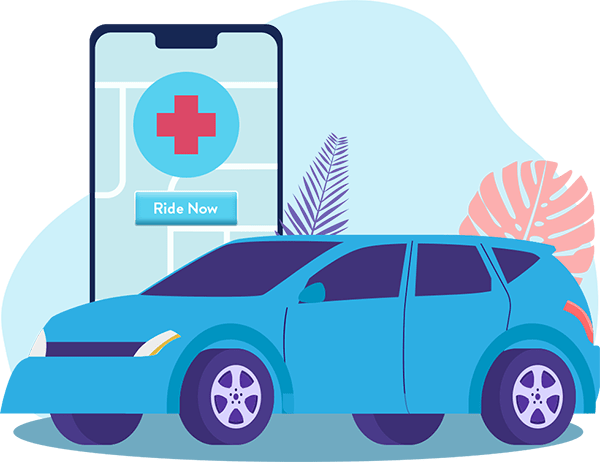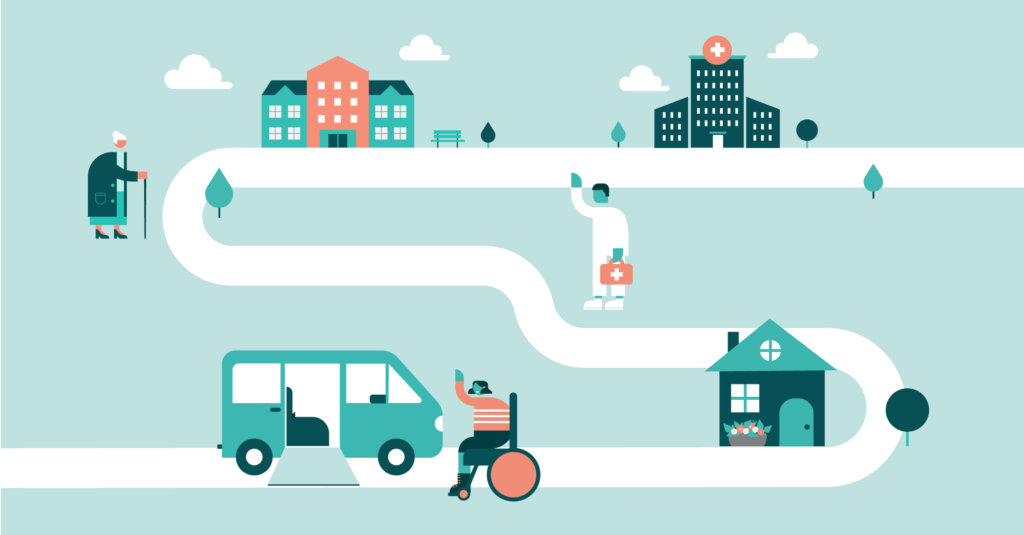You can make an entry into the on-demand healthcare sector by starting a non-emergency medical transportation business. This idea may sound new to you, and to help you out, this blog has been curated. The content of this blog will cover the various stages involved in setting up the on-demand medical transportation business. Right from understanding the market needs to the development of software for handling the bookings, you will get to know from this blog.
What is the purpose of non-emergency medical transportation services?
Non-emergency medical transportation vehicles are needed to carry elderly people and people with disabilities to hospitals. You must note that this transportation service is not similar to ambulances services, which will come under the emergency medical transportation services.
Non-emergency medical transportation business – Stages involved
For setting up your medical transportation business, you have to pass through several stages, which will start from market analysis and end with the transportation app development. Let us make a detailed summary of the stages involved in rolling out the much-needed non-emergency medical transportation business.
Stage 1: Business plan
A solid business plan is a prerequisite for starting any business. Your business plan must include a thorough understanding of the market. In other terms, you can say that thorough market research has to be conducted regarding the scope of the non-emergency medical transportation business. The business plan will include the objectives and roadmap of your business.
Hence, coming up with a solid business plan is an important and preliminary step.
Stage 2: Identification of a suitable location

The geographical location you choose is the key player of your business. You can take help from statistics to find out the region that will be appropriate for your business. For example, you can find out regions where more elderly people live. Similarly, you can find the number of healthcare centers, hospitals, nursing homes, and clinics in your target region. These numbers will help you in planning out your business accordingly.
READ MORE: What are the traffic sources of a site
Stage 3: Decide the type of business model
The business model is defined as the mode of business operation. In simple terms, your business model will tell whether you will operate as a separate entity or establish partnerships. In on-demand businesses, there are two types of business models. They are aggregator and individual. Each model differs in the mode of operation.
For example, the aggregator model means that your business will have partnerships with many service providers who provide non-emergency medical transportation services. Users can access the facilities of those service providers through your app. In contrast, if you provide the non-emergency transportation facilities all by yourself without partnering with service providers, then the model is called the individual business model.
READ MORE: Things to Do Before Launching Your WordPress Site
Stage 4: Get funding
Financially, if you feel that you cannot stand alone, then the obvious choice is to raise funds. There are so many funding options available, and you can choose them based on your business requirements. Generally, for transportation businesses, funds will be required for purchasing vehicles and developing software.
Stage 5: Invest in resources
Only after deciding the business model can you invest in resources. From the above stage, you would have known about the aggregator and individual business models. If you select the aggregator model, then you don’t have to spend money on hiring drivers and vehicles. Your service providers will completely take care of those investments.
Suppose you choose the individual business model, then you need to plough money into buying vehicles and most importantly hiring drivers. In this business model, you will hire drivers and buy vehicles, right? So, obviously, you will have to take insurance, which is mandatory.
READ MORE: 7 Reasons Swift is The future of iOS App Development
Stage 6: Create your brand identity
Before getting license permits for your business, you must, first of all, create a brand identity. You must give a unique brand name and logo that is quickly recognizable for your customers.
Stage 7: Legal permits
Since this is a transportation services business, you need to get permits from local authorities. You have to register your business with your brand’s name and logo. This is one of the non-skippable stages.
Stage 8: Software development
After all, the software you build for your non-emergency medical transportation services will decide your success. But how? We all know that the forefront of any online business is the software through which the service can be accessed by the users. So, your software must be glitch-free and spontaneous in processing the booking of the users.

So, a high level of attention is required while developing your software. Other than certain properties like a glitch-free processor, a captivating user interface, the features of the software are even more important. The list of features important for the non-emergency medical transportation software is as follows.
- Swift bookings – Once the users enter their location along with the hospital’s location they want to visit, the app will quickly map their request to the available driver.
- Schedule bookings – Not every user will be in need of your transportation services immediately. Users who need your transportation services after a while can reserve the date using the schedule bookings feature.
- Vehicle tracker – The software will definitely need the location tracking facility to check the vehicle’s spot. When users get the booking confirmation, the software enables them to track the vehicle’s location.
- Time of arrival – Including this feature that tells your users about the arrival time of the non-emergency vehicle will be useful. The time will be generated automatically based on the distance between the driver’s location and the user’s location.
- Fare calculator – Your app must have advanced features; then, only users will develop an interest in your app. So, the fare calculating feature is crucial, which will instantly inform the users about the total fare in advance.
- Route optimizer – Getting the shortest route is possible through the route optimizer feature, which is included in the driver’s app.
READ MORE: Write for us + SEO + Marketing + Business + Health + Travel
Final thoughts
The Uber clone software has all the before-mentioned features and is ready-made. You can launch the medical transportation app in a very precise duration if you invest in this ready-made Uber clone.

